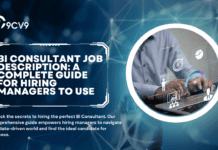Key Takeaways
- Client onboarding software automates and streamlines the onboarding process, reducing manual tasks and improving customer satisfaction.
- Key benefits include faster onboarding, enhanced compliance, personalized experiences, and improved data security across industries.
- Advanced technologies like AI, biometrics, and blockchain are transforming onboarding, making it more efficient, secure, and user-friendly.
In today’s fast-paced business environment, first impressions matter more than ever.
The initial interactions a company has with its clients set the stage for long-term relationships, customer satisfaction, and brand loyalty.
However, many businesses still struggle with inefficient, manual onboarding processes that lead to delays, miscommunication, and compliance risks.
To overcome these challenges, organizations are increasingly turning to client onboarding software—a digital solution designed to streamline and automate the onboarding experience, ensuring a smooth and hassle-free journey for both businesses and their clients.

Client onboarding is a critical process in industries such as financial services, SaaS, legal, healthcare, and consulting, where regulatory compliance, data accuracy, and customer engagement are top priorities.
Traditional onboarding methods, which rely heavily on paperwork, manual data entry, and back-and-forth communication, can be time-consuming and prone to errors.
These inefficiencies not only frustrate clients but also place a significant burden on internal teams, ultimately slowing down business growth.
Client onboarding software eliminates these bottlenecks by digitizing and automating key aspects of the onboarding workflow, enabling businesses to deliver a more efficient, secure, and customer-centric experience.
At its core, client onboarding software is designed to manage and simplify the entire onboarding lifecycle—from initial client intake and identity verification to document management, compliance checks, and communication.
By integrating with existing systems such as CRM platforms, payment gateways, and regulatory databases, this software ensures seamless coordination across departments while minimizing redundant tasks.
Advanced features such as electronic signatures, AI-powered data validation, automated workflow triggers, and real-time progress tracking further enhance efficiency, allowing businesses to onboard clients faster while reducing human errors.
The adoption of client onboarding software is rapidly increasing, driven by the need for greater operational efficiency, enhanced security, and improved customer experience.
Businesses that implement these digital solutions gain a competitive advantage by reducing onboarding time, ensuring compliance with industry regulations (such as KYC and AML in the financial sector), and providing a personalized onboarding journey tailored to each client’s needs.
In addition, automation minimizes the administrative workload on teams, allowing them to focus on more strategic tasks rather than repetitive paperwork and manual follow-ups.
In this blog, we will explore what client onboarding software is, how it works, its key features, and the benefits it offers to businesses across various industries.
Whether you are a financial institution looking to streamline regulatory compliance or a SaaS company aiming to enhance customer acquisition, understanding the role of client onboarding software can help you make informed decisions about optimizing your business processes.
Let’s dive deeper into how this technology transforms onboarding experiences, improves customer retention, and drives long-term business success.
Before we venture further into this article, we would like to share who we are and what we do.
About 9cv9
9cv9 is a business tech startup based in Singapore and Asia, with a strong presence all over the world.
With over nine years of startup and business experience, and being highly involved in connecting with thousands of companies and startups, the 9cv9 team has listed some important learning points in this overview of What is Client Onboarding Software and How It Works.
If your company needs recruitment and headhunting services to hire top-quality employees, you can use 9cv9 headhunting and recruitment services to hire top talents and candidates. Find out more here, or send over an email to [email protected].
Or just post 1 free job posting here at 9cv9 Hiring Portal in under 10 minutes.
What is Client Onboarding Software and How It Works
- Understanding Client Onboarding Software
- How Client Onboarding Software Works
- Benefits of Using Client Onboarding Software
- Key Industries That Benefit from Client Onboarding Software
- How to Choose the Right Client Onboarding Software
- Future Trends in Client Onboarding Software
1. Understanding Client Onboarding Software
Client onboarding software is a specialized digital solution designed to simplify, automate, and enhance the process of welcoming new clients into a business. It replaces traditional manual onboarding methods, reducing paperwork, streamlining workflows, and ensuring a seamless experience for both businesses and their customers. By integrating with existing systems such as CRM, compliance databases, and payment platforms, client onboarding software ensures that organizations can efficiently manage client intake, documentation, verification, and ongoing engagement.
This section explores what client onboarding software is, its key features, and how it differentiates from manual onboarding processes, helping businesses understand its critical role in improving efficiency and customer satisfaction.
What is Client Onboarding Software?
- Definition: Client onboarding software is a digital tool that automates and manages the client onboarding process, ensuring smooth data collection, compliance verification, documentation, and communication.
- Purpose: It is designed to enhance efficiency, accuracy, and user experience by reducing manual errors, eliminating redundant tasks, and providing a structured onboarding journey.
- Industries that use it:
- Financial services & banking – For KYC (Know Your Customer) and AML (Anti-Money Laundering) compliance.
- SaaS & IT companies – To onboard new users efficiently and set up accounts seamlessly.
- Legal & consulting firms – For secure contract management and client verification.
- Healthcare & insurance – To handle patient onboarding and policyholder registration.
- Real estate & property management – To streamline lease agreements and tenant verification.
Example: A bank that traditionally required new customers to visit a branch and submit physical documents can now use onboarding software to allow remote verification through AI-powered ID checks and digital signatures, significantly reducing onboarding time.
Key Features of Client Onboarding Software
Client onboarding software comes with a range of features designed to enhance automation, security, compliance, and customer experience.
1. Automated Workflow Management
- Creates structured workflows for different types of clients.
- Reduces the time taken to complete onboarding by automating repetitive tasks.
- Sends automatic reminders and task notifications to both clients and internal teams.
Example: A SaaS company using onboarding software can set up an automated workflow where users receive step-by-step onboarding instructions via email after signing up for a service.
2. Digital Identity Verification & Compliance Checks
- Uses AI-driven tools to verify customer identities (e.g., scanning passports, driver’s licenses).
- Ensures compliance with KYC, AML, and GDPR regulations in industries like finance and insurance.
- Reduces fraud risks by cross-checking customer details with global databases.
Example: A cryptocurrency exchange platform leverages onboarding software to validate user identities through biometric authentication and government-issued ID verification.
3. Customizable Client Portals
- Provides clients with a self-service portal for document submission and progress tracking.
- Personalizes the onboarding experience based on client needs and industry-specific requirements.
- Offers multilingual support for international businesses.
Example: A law firm can provide clients with a secure portal where they can upload required legal documents, sign agreements digitally, and communicate with their assigned lawyer.
4. Electronic Signature Integration
- Allows clients to digitally sign contracts and agreements from anywhere.
- Reduces paperwork and speeds up onboarding by eliminating the need for physical signatures.
- Ensures legal validity and security through encrypted digital signatures.
Example: A real estate agency can use onboarding software to enable tenants to sign lease agreements electronically, reducing the time needed to finalize rental agreements.
5. Seamless CRM & Third-Party Integrations
- Connects with CRM, ERP, payment gateways, and accounting software.
- Syncs client data across platforms, reducing manual data entry.
- Enhances efficiency by automating lead-to-client conversion.
Example: A consulting firm using Salesforce-integrated onboarding software can automatically populate new client details into its CRM, ensuring a smooth transition from prospect to active client.
6. Real-Time Progress Tracking & Reporting
- Allows businesses to monitor each step of the onboarding journey.
- Identifies bottlenecks and areas that require improvement.
- Generates analytics and reports for compliance audits.
Example: A healthcare provider can track whether patients have completed all required paperwork and medical history forms before their first appointment.
Why Businesses Need Client Onboarding Software
- To Improve Customer Experience: A frictionless onboarding experience leads to higher client satisfaction and retention.
- To Reduce Operational Costs: Automating onboarding minimizes the need for manual labor and administrative overhead.
- To Ensure Regulatory Compliance: Many industries require strict compliance with legal and data security regulations.
- To Scale Efficiently: Businesses experiencing growth need a system that can onboard multiple clients simultaneously.
- To Minimize Risk and Fraud: AI-driven identity verification ensures that clients are legitimate and reduces fraudulent activity.
Conclusion
Client onboarding software has transformed the way businesses interact with new clients, shifting from outdated manual processes to highly efficient, automated, and customer-friendly digital experiences. With features such as automated workflows, e-signatures, compliance verification, CRM integration, and real-time tracking, companies can now onboard clients faster, more securely, and with greater accuracy.
As industries continue to digitize, investing in the right client onboarding software can give businesses a competitive edge, enhance compliance, and improve customer satisfaction. The next sections will explore how client onboarding software works, its benefits, and how businesses can choose the best solution for their needs.
2. How Client Onboarding Software Works
Client onboarding software streamlines and automates the process of welcoming new clients by digitizing documentation, compliance checks, and workflow management. It ensures a seamless, structured, and user-friendly onboarding experience by integrating various features such as digital identity verification, e-signatures, and CRM synchronization.
This section provides a detailed breakdown of how client onboarding software works, from initial client registration to final activation, covering each stage in the onboarding journey.
1. Initial Client Registration and Data Collection
The onboarding process begins with collecting essential client information, which can be automated and customized based on the business’s requirements.
- User-friendly intake forms
- Clients provide basic details such as name, contact information, and business details.
- The system validates input fields to ensure accuracy and prevent incomplete submissions.
- Customizable forms allow businesses to collect industry-specific information.
- Third-party data enrichment
- Integrates with external databases to auto-fill client details.
- Reduces manual data entry by pulling information from public records and CRM systems.
- Enhances accuracy by minimizing client input errors.
Example: A financial advisory firm can use onboarding software to pre-fill client details based on their government ID, reducing the need for repeated manual entry.
2. Identity Verification and Compliance Checks
For industries that require regulatory compliance, onboarding software automates identity verification, ensuring that new clients meet legal requirements such as KYC (Know Your Customer) and AML (Anti-Money Laundering) compliance.
- AI-powered identity verification
- Uses OCR (Optical Character Recognition) to scan and extract details from government-issued IDs.
- Cross-checks client details against regulatory databases and fraud detection lists.
- Biometric authentication such as facial recognition can be used for additional security.
- Document validation and fraud detection
- Automated systems check for forged documents, expired IDs, or discrepancies in client details.
- Real-time verification reduces the time needed for manual reviews.
Example: A cryptocurrency exchange uses client onboarding software to scan passport IDs, compare facial biometrics with the document photo, and confirm client identity within minutes.
3. Digital Document Management and E-Signatures
Client onboarding software replaces traditional paper-based documentation with a secure, digital approach, ensuring faster approvals and better organization.
- Secure document upload and storage
- Clients can upload required documents (business licenses, tax forms, contracts) via a self-service portal.
- Encrypted cloud storage ensures confidentiality and security.
- Automated contract generation
- Templates for standard agreements are preloaded into the system.
- Dynamic fields personalize contracts based on client information.
- Reduces legal paperwork and administrative workload.
- Electronic signatures (E-Signatures)
- Clients can sign agreements digitally using legally binding e-signatures.
- Eliminates delays caused by physical document signing and mailing.
- Integrates with platforms like DocuSign, Adobe Sign, and HelloSign for convenience.
Example: A SaaS company streamlines its onboarding by allowing clients to sign service agreements electronically, reducing onboarding time from weeks to hours.
4. Automated Workflow and Task Assignment
Client onboarding software automates workflows, ensuring each step of the process is completed systematically without human intervention.
- Predefined onboarding workflows
- Businesses can set up task-based workflows for different client types.
- Automatic routing ensures documents are reviewed by the correct department (compliance, finance, legal).
- Task reminders and progress tracking
- Automated notifications remind clients to complete missing steps (e.g., signing contracts, submitting documents).
- Internal teams receive alerts for pending approvals or document verification.
- Custom dashboards provide a real-time view of onboarding progress.
Example: A legal firm uses onboarding software to assign specific tasks (document review, compliance checks) to different departments, ensuring smooth coordination.
5. Integration with CRM, Payment, and Communication Tools
To ensure a seamless transition from onboarding to client activation, client onboarding software integrates with existing business systems such as CRM, payment gateways, and communication tools.
- CRM and ERP integration
- Automatically syncs client details with platforms like Salesforce, HubSpot, or Zoho CRM.
- Reduces data duplication and ensures accurate records across departments.
- Payment processing and invoicing
- Clients can set up payment methods during onboarding.
- Integrates with payment platforms such as Stripe, PayPal, and Square.
- Automated communication workflows
- Sends personalized welcome emails, user guides, and onboarding instructions.
- Supports omnichannel engagement via email, chatbots, and SMS notifications.
Example: A subscription-based business integrates its onboarding software with Stripe, allowing new clients to set up auto-billing during registration.
6. Client Self-Service Portal for Ongoing Support
A self-service portal enhances the client experience by offering direct access to onboarding resources, reducing the need for support staff intervention.
- Client dashboard for onboarding progress
- Displays a checklist of completed and pending steps.
- Allows clients to track their own onboarding status.
- On-demand support and knowledge base
- Provides FAQs, video tutorials, and live chat for onboarding assistance.
- AI chatbots can answer common queries and guide clients through the process.
- Role-based access control
- Different team members (finance, legal, operations) can access relevant client data.
- Ensures data security and compliance by restricting sensitive information access.
Example: A real estate firm provides new tenants with a self-service portal where they can upload lease documents, sign agreements, and check their move-in status.
7. Performance Analytics and Reporting
To ensure continuous improvement and compliance, client onboarding software provides detailed analytics and reporting on onboarding efficiency.
- Onboarding time tracking
- Measures the average time taken to onboard a new client.
- Identifies bottlenecks that slow down the process.
- Compliance audit reports
- Logs all document verifications and regulatory checks.
- Ensures businesses remain compliant with industry regulations.
- Customer experience insights
- Gathers client feedback through surveys and sentiment analysis.
- Helps optimize the onboarding experience based on user behavior.
Example: A banking institution uses onboarding analytics to identify delays in KYC verification, leading to process improvements and faster approvals.
Conclusion
Client onboarding software functions as a comprehensive automation tool that replaces manual onboarding processes with a structured, secure, and user-friendly digital workflow. By incorporating AI-powered identity verification, automated document management, e-signatures, CRM integration, and real-time tracking, businesses can onboard clients faster, more efficiently, and with greater accuracy.
With enhanced compliance, seamless integrations, and self-service capabilities, client onboarding software reduces administrative workload, improves client satisfaction, and ensures regulatory adherence. In the next sections, we will explore the benefits of using client onboarding software and how businesses can select the best solution for their needs.
3. Benefits of Using Client Onboarding Software
Client onboarding software offers businesses a streamlined, automated, and efficient approach to welcoming new clients. It eliminates manual bottlenecks, reduces errors, and enhances overall customer satisfaction. By leveraging AI-powered verification, automated workflows, and seamless integrations, businesses can optimize the onboarding experience while ensuring compliance with industry regulations.
This section explores the key benefits of using client onboarding software, divided into sub-sections for a more detailed understanding.
1. Faster Onboarding Process
Traditional client onboarding processes involve extensive paperwork, manual data entry, and multiple approval stages, which can delay the client activation process. Client onboarding software significantly accelerates these steps.
- Automated data entry and validation
- Reduces manual effort by extracting client information from uploaded documents.
- Uses AI and OCR (Optical Character Recognition) to auto-fill forms and detect errors.
- Instant document verification
- Real-time ID scanning and compliance checks ensure quick approvals.
- Reduces processing times from days or weeks to minutes.
- Predefined workflow automation
- Eliminates the need for repetitive tasks by automating approvals and task assignments.
- Ensures a structured, step-by-step onboarding experience.
Example: A financial services company reduced its onboarding time from 10 business days to 24 hours by integrating an AI-powered client onboarding system.
2. Enhanced Client Experience and Engagement
A well-structured and user-friendly onboarding experience builds trust and enhances client satisfaction.
- User-friendly digital interface
- Clients can complete onboarding steps at their own pace via an intuitive self-service portal.
- Reduces frustration caused by lengthy manual processes.
- Omnichannel communication
- Sends automated email, SMS, and chatbot notifications for onboarding progress updates.
- Allows clients to ask questions via AI-powered chatbots, reducing reliance on customer support teams.
- Personalized onboarding journey
- Customizes onboarding steps based on client type, industry, or location.
- Provides tailored guides, tutorials, and FAQs.
Example: A B2B SaaS company improved customer retention rates by 30% by implementing a client onboarding system with personalized onboarding videos and interactive guides.
3. Improved Compliance and Risk Management
For businesses in regulated industries such as finance, healthcare, and real estate, compliance is a major concern. Client onboarding software helps enforce regulatory standards effortlessly.
- Automated KYC (Know Your Customer) and AML (Anti-Money Laundering) checks
- Uses machine learning algorithms to verify client identities and detect fraudulent applications.
- Reduces risks associated with non-compliant clients.
- Secure data encryption and GDPR compliance
- Ensures that sensitive client information is stored securely with industry-standard encryption.
- Complies with data protection laws such as GDPR, CCPA, and HIPAA.
- Audit trails for transparency
- Logs every interaction, approval, and document submission for compliance audits.
- Provides easy retrieval of records for regulatory reviews.
Example: A global banking institution leveraged onboarding software to achieve 100% compliance with KYC regulations, reducing legal risks and potential fines.
4. Increased Operational Efficiency
Manual onboarding processes require significant human intervention, leading to inefficiencies and increased operational costs. Onboarding software reduces administrative workload.
- Task automation reduces human dependency
- Eliminates redundant tasks such as manual data entry, document requests, and contract signing.
- Frees up staff to focus on strategic activities.
- Seamless team collaboration
- Assigns onboarding tasks to the appropriate teams (compliance, finance, legal) automatically.
- Reduces miscommunication and ensures process transparency.
- Error reduction through AI-powered verification
- Detects inconsistencies in client information and prevents incorrect data entry.
- Reduces rework and delays caused by incorrect submissions.
Example: A real estate firm reduced administrative costs by 40% by automating document verification and task management.
5. Seamless Integration with Business Systems
Client onboarding software integrates with CRM, ERP, payment platforms, and communication tools, ensuring a smooth transition from onboarding to client activation.
- CRM integration (e.g., Salesforce, HubSpot, Zoho CRM)
- Syncs client data automatically, reducing duplication and errors.
- Provides a unified client profile for sales, customer support, and account management teams.
- Payment gateway integration (e.g., Stripe, PayPal, Square)
- Allows clients to set up billing and payment preferences during onboarding.
- Reduces payment setup time and improves revenue collection.
- Electronic signature integration (e.g., DocuSign, Adobe Sign)
- Speeds up contract approvals without requiring physical signatures.
- Enhances document security and authenticity.
Example: A subscription-based business improved client retention by 25% by integrating onboarding software with its CRM and payment system, allowing seamless contract finalization and automated invoicing.
6. Reduced Client Drop-Off Rates
A slow, complex, or confusing onboarding process can cause potential clients to abandon the process before completion. Onboarding software ensures higher client retention.
- Simplified step-by-step process
- Provides a structured and guided onboarding flow, preventing clients from feeling overwhelmed.
- Breaks down complex processes into manageable steps.
- Automated reminders and follow-ups
- Sends notifications for incomplete tasks, such as missing document uploads or pending signatures.
- Ensures clients complete their onboarding without delays.
- Mobile-friendly onboarding
- Allows clients to complete onboarding on smartphones or tablets, increasing accessibility.
- Supports digital ID verification and document uploads via mobile apps.
Example: A fintech startup reduced its client drop-off rate by 50% after implementing mobile-friendly onboarding software with automated task reminders.
7. Data-Driven Decision Making
Client onboarding software provides real-time insights and analytics to help businesses optimize their onboarding process.
- Onboarding performance tracking
- Monitors completion rates, time taken per step, and client engagement levels.
- Identifies bottlenecks in the process and suggests improvements.
- Client satisfaction analytics
- Collects feedback from clients through post-onboarding surveys.
- Uses AI-based sentiment analysis to assess client onboarding experiences.
- Regulatory compliance reporting
- Generates detailed compliance reports for audits and internal reviews.
- Ensures businesses stay ahead of regulatory changes.
Example: A healthcare provider optimized its onboarding process by analyzing client feedback, reducing onboarding time by 35% and improving patient satisfaction.
Conclusion
Client onboarding software transforms traditional onboarding processes into a seamless, automated, and highly efficient experience. By reducing manual work, ensuring compliance, enhancing customer satisfaction, and integrating with existing business tools, organizations can onboard clients faster, minimize risks, and increase retention rates.
Whether it’s a finance, legal, healthcare, or SaaS business, implementing client onboarding software provides long-term benefits in terms of efficiency, security, and overall business growth. The next section will explore how businesses can choose the right client onboarding software based on their unique needs.
4. Key Industries That Benefit from Client Onboarding Software
Client onboarding software is a critical tool for businesses that require a structured, secure, and efficient process to welcome new clients. It automates document collection, identity verification, compliance checks, and customer engagement, ensuring a seamless experience. Various industries, particularly those dealing with sensitive information, compliance regulations, or subscription-based services, can maximize operational efficiency with onboarding software.
This section explores the key industries that benefit from client onboarding software, breaking down the specific advantages and use cases for each sector.
1. Financial Services and Banking
Financial institutions, including banks, credit unions, investment firms, and insurance companies, rely on stringent compliance processes for client onboarding. Client onboarding software ensures that KYC (Know Your Customer) and AML (Anti-Money Laundering) regulations are met while offering a seamless digital experience.
- Automated KYC and AML compliance
- Verifies client identities through biometric authentication, government-issued ID scanning, and address verification.
- Ensures compliance with financial regulations such as FINRA, FATF, and GDPR.
- Faster account opening and approvals
- Reduces account approval time from days to hours by automating document collection and background checks.
- Provides real-time status updates to clients via email or mobile notifications.
- Enhanced fraud detection and risk management
- Uses AI-powered fraud detection to identify suspicious transactions and high-risk applicants.
- Prevents financial crimes and money laundering activities.
Example: A global bank reduced its account opening time from 10 days to 24 hours by integrating an AI-driven client onboarding system with biometric verification.
2. Legal and Professional Services
Law firms, consulting firms, and tax advisory services handle confidential client information and must ensure compliance with industry regulations. Client onboarding software simplifies client intake, legal documentation, and compliance checks.
- Automated document management
- Digitally collects and stores client agreements, contracts, and compliance documents.
- Ensures all legal documents are electronically signed and securely archived.
- Conflict-of-interest screening
- Cross-references new clients against existing databases to detect conflicts of interest before engagement.
- Reduces legal risks by preventing unauthorized client relationships.
- Regulatory compliance and due diligence
- Ensures compliance with GDPR, AML, and Bar Association guidelines.
- Conducts background checks to assess the credibility of clients.
Example: A multinational law firm reduced its client onboarding time by 50% by automating contract management and compliance verification.
3. Healthcare and Telemedicine
The healthcare industry deals with sensitive patient data and must adhere to strict privacy laws. Onboarding software streamlines the process while ensuring compliance with HIPAA, GDPR, and other regulations.
- Seamless patient registration and data collection
- Digital forms allow patients to submit medical histories, insurance details, and consent forms remotely.
- Reduces paperwork and minimizes errors.
- Automated insurance verification
- Integrates with insurance databases to validate coverage eligibility in real-time.
- Prevents claim denials due to incorrect information.
- HIPAA-compliant data security
- Encrypts patient data to protect against cyber threats and unauthorized access.
- Ensures compliance with healthcare data privacy regulations.
Example: A telemedicine provider increased its patient onboarding efficiency by 40% by implementing AI-powered identity verification and automated insurance checks.
4. Real Estate and Property Management
Property management firms, real estate agencies, and landlords benefit from client onboarding software by streamlining tenant and buyer verification processes.
- Digital lease and contract signing
- Uses e-signature platforms like DocuSign to execute contracts quickly.
- Eliminates the need for physical paperwork.
- Tenant screening and background checks
- Verifies rental history, income, and credit scores to assess tenant reliability.
- Reduces financial risk by ensuring tenants meet leasing criteria.
- Automated rent payment setup
- Integrates with Stripe, PayPal, or property management software for seamless rent collection.
- Sends automated payment reminders to tenants.
Example: A property management firm reduced vacancy turnaround time by 60% by automating tenant screening and lease agreement signing.
5. SaaS and Technology Companies
Software-as-a-Service (SaaS) companies and IT service providers rely on efficient client onboarding to drive customer engagement and retention.
- Automated account setup and subscription management
- Generates accounts, assigns user roles, and configures settings automatically.
- Integrates with billing systems to ensure smooth subscription activation.
- In-app onboarding guidance and tutorials
- Uses interactive walkthroughs and tooltips to help users navigate the software.
- Improves user adoption rates.
- AI-powered customer segmentation
- Identifies user behavior patterns and personalizes onboarding experiences.
- Sends targeted educational content and tutorials based on user needs.
Example: A SaaS company increased user retention by 30% by implementing an interactive onboarding system with personalized product guides.
6. Education and E-Learning Platforms
Online learning platforms and universities need structured onboarding to enroll students efficiently while ensuring regulatory compliance.
- Automated student enrollment and verification
- Verifies student credentials using AI-powered document scanning.
- Integrates with university databases for real-time authentication.
- Course recommendation and personalized learning paths
- Uses AI to recommend courses based on student interests and academic background.
- Enhances student engagement and learning outcomes.
- Digital payment and financial aid processing
- Automates tuition fee payments and integrates with scholarship and financial aid portals.
- Reduces administrative workload for educational institutions.
Example: An e-learning platform increased student enrollments by 45% by streamlining application verification and course onboarding.
7. Insurance Industry
Insurance providers require a fast and compliant onboarding process to assess risks and verify client details before policy issuance.
- AI-powered risk assessment and underwriting
- Uses machine learning algorithms to evaluate policy eligibility based on client profiles.
- Reduces underwriting time significantly.
- Seamless policy issuance and e-signatures
- Generates digital insurance policies that clients can sign electronically.
- Speeds up policy activation and renewal processes.
- Automated claims registration and verification
- Enables clients to submit claims through digital forms and AI-assisted documentation.
- Reduces claim approval delays.
Example: A leading insurance company reduced onboarding time by 65% by integrating AI-powered underwriting and automated document processing.
Conclusion
Client onboarding software is a game-changer for industries that require secure, fast, and compliant client activation processes. From financial services and healthcare to SaaS and real estate, businesses can leverage automation, AI-powered verification, and digital documentation to enhance the onboarding experience.
By adopting a tailored onboarding solution, companies can reduce costs, improve efficiency, and boost client satisfaction, ensuring long-term business growth.
5. How to Choose the Right Client Onboarding Software
Selecting the right client onboarding software is essential for businesses aiming to streamline client interactions, automate workflows, and ensure compliance. With numerous solutions available in the market, companies must assess key features, scalability, and security to determine the best fit for their needs.
This section provides a detailed guide on how to choose the right client onboarding software, outlining critical factors, must-have features, and industry-specific considerations.
1. Define Your Business Needs and Objectives
Before selecting a client onboarding solution, businesses must first identify their primary requirements and goals.
- Assess onboarding challenges
- Identify pain points in the current onboarding process (e.g., manual paperwork, compliance delays, poor client experience).
- Understand where automation can reduce inefficiencies and improve engagement.
- Determine industry-specific compliance needs
- Financial institutions may require KYC/AML compliance features.
- Healthcare providers must adhere to HIPAA or GDPR data protection standards.
- Legal firms need automated contract management for client agreements.
- Clarify scalability expectations
- Startups may need a flexible solution that grows with the business.
- Enterprises require multi-user access, advanced integrations, and AI-driven automation.
Example: A legal consultancy firm with global clients needed onboarding software that supported multi-language contracts and e-signature authentication to streamline the intake process.
2. Evaluate Key Features and Functionalities
Not all client onboarding software solutions are created equal. Businesses should compare key features to ensure they align with their needs.
- Automated Workflow Management
- Enables businesses to set up rule-based workflows that trigger specific actions based on client inputs.
- Reduces manual intervention by automating document requests, approvals, and follow-ups.
- Customizable Onboarding Journeys
- Supports tailored onboarding experiences based on client type, industry, or service plan.
- Allows businesses to personalize welcome messages, training modules, and follow-up communications.
- AI-Powered Document Verification
- Scans, validates, and auto-fills data from government-issued IDs, utility bills, and company documents.
- Prevents fraud and ensures compliance with regulatory requirements.
- E-Signature Integration
- Enables clients to sign agreements digitally using platforms like DocuSign, Adobe Sign, or HelloSign.
- Reduces onboarding delays by eliminating the need for physical paperwork.
- Multi-Platform Accessibility
- Ensures the software is accessible via desktop, mobile, and cloud-based applications.
- Provides clients with a seamless experience on any device.
Example: A financial advisory firm integrated AI-driven document verification into its onboarding process, reducing compliance approval time from 48 hours to just 6 hours.
3. Consider Security and Compliance Standards
Since client onboarding involves handling sensitive information, businesses must prioritize software that ensures data security and regulatory compliance.
- Data Encryption and Secure Storage
- Ensures client documents and personal information are encrypted using AES-256 or similar security protocols.
- Supports cloud-based storage with multi-layer access controls.
- Regulatory Compliance
- Meets industry standards such as GDPR (General Data Protection Regulation), HIPAA (Health Insurance Portability and Accountability Act), AML (Anti-Money Laundering), and PCI-DSS (Payment Card Industry Data Security Standard).
- Offers built-in audit trails to track compliance-related activities.
- Access Control and User Authentication
- Provides role-based access control (RBAC) to limit data exposure to only authorized users.
- Uses multi-factor authentication (MFA) and biometric security for added protection.
Example: A European investment firm selected an onboarding solution with GDPR-compliant encryption to ensure client data privacy while automating KYC verification.
4. Assess Integration Capabilities
Client onboarding software should integrate seamlessly with existing business tools to improve workflow efficiency.
- CRM and Sales Platforms
- Connects with Salesforce, HubSpot, Zoho CRM, or Microsoft Dynamics for synchronized client data.
- Ensures sales teams have real-time access to onboarding progress and customer interactions.
- Payment and Billing Systems
- Links with Stripe, PayPal, QuickBooks, and invoicing platforms for seamless payment processing.
- Automates recurring billing for subscription-based services.
- Project Management and Customer Support Tools
- Integrates with Asana, Trello, Monday.com, or Zendesk for smoother handovers between departments.
- Enables customer support teams to track and resolve onboarding-related queries faster.
Example: A SaaS company improved cross-departmental efficiency by integrating onboarding software with Salesforce CRM and Zendesk, reducing client activation time by 35%.
5. Evaluate User Experience and Customization Options
A smooth, intuitive onboarding experience reduces drop-off rates and enhances client satisfaction.
- User-Friendly Interface
- Look for an intuitive dashboard that simplifies client data entry and tracking.
- Ensure self-service onboarding options for clients who prefer independent setup.
- Personalization Features
- Allows branding with custom logos, color schemes, and messaging.
- Enables tailored onboarding flows based on client needs, location, or service tier.
- Multilingual Support
- Essential for businesses operating in international markets.
- Ensures clients receive onboarding instructions in their preferred language.
Example: A global HR outsourcing firm adopted AI-driven multilingual onboarding, reducing language barriers for international clients and increasing retention rates.
6. Compare Pricing and ROI Potential
Pricing varies depending on the features, user capacity, and automation level of the software.
- Subscription vs. One-Time Cost
- Subscription-based models (e.g., monthly or annual SaaS plans) offer scalability.
- One-time purchase options may be more cost-effective for businesses with stable onboarding needs.
- Hidden Costs
- Check for extra charges related to API access, compliance upgrades, or advanced reporting.
- Assess whether the software offers free upgrades or requires separate licensing fees.
- ROI Measurement
- Evaluate how the software can reduce onboarding time and lower operational costs.
- Consider potential revenue increases from faster client activations and improved engagement.
Example: A consulting firm saved 40% in administrative costs by adopting an automated client onboarding system, reducing manual paperwork and improving compliance accuracy.
7. Check Customer Support and Vendor Reputation
Reliable customer support ensures smooth implementation and ongoing software optimization.
- Availability of Support Channels
- Look for 24/7 customer support via chat, email, or phone.
- Assess whether the vendor offers dedicated onboarding specialists.
- Customer Reviews and Case Studies
- Analyze G2, Capterra, and Trustpilot reviews to gauge user satisfaction.
- Check for vendor case studies and success stories from similar industries.
- Software Trial and Demo Options
- Choose software that offers a free trial or live demo to test its usability before committing.
- Evaluate real-world performance through pilot programs before full implementation.
Example: A mid-sized insurance company chose software with 24/7 multilingual support, ensuring its global team could resolve onboarding issues quickly.
Conclusion
Choosing the right client onboarding software involves assessing business needs, security compliance, automation capabilities, and integration potential. By considering key factors like workflow automation, AI-powered document verification, CRM integration, and pricing models, businesses can select the best solution to enhance efficiency, improve client experiences, and drive long-term growth.
Investing in scalable, secure, and customizable onboarding software ensures that businesses stay ahead of industry demands while delivering a frictionless onboarding journey for their clients.
6. Future Trends in Client Onboarding Software
The evolution of client onboarding software is transforming how businesses engage, verify, and retain clients. As companies seek more efficient, secure, and personalized onboarding experiences, emerging technologies and automation are shaping the future of the industry.
This section explores key trends in client onboarding software, highlighting how businesses can leverage AI, blockchain, hyper-personalization, and automation to streamline processes and enhance user experiences.
1. AI-Powered Automation and Intelligent Workflows
Artificial Intelligence (AI) is revolutionizing client onboarding by automating repetitive tasks, analyzing customer data, and enhancing decision-making processes.
- Automated Document Processing
- AI-driven optical character recognition (OCR) extracts and verifies data from identity documents, reducing manual errors.
- Advanced natural language processing (NLP) enables faster form-filling and document review.
- Intelligent Client Risk Assessment
- AI-powered models analyze client history, behavior, and risk factors in real time.
- Helps financial institutions comply with Know Your Customer (KYC) and Anti-Money Laundering (AML) regulations.
- Smart Workflow Optimization
- AI-powered chatbots and virtual assistants provide real-time onboarding assistance.
- Reduces onboarding time by automating email follow-ups, document requests, and customer support interactions.
Example: A global bank integrated AI-driven onboarding software, reducing client verification time from 3 days to 30 minutes while ensuring compliance with AML and KYC regulations.
2. Blockchain for Secure and Transparent Onboarding
Blockchain technology is emerging as a game-changer in client onboarding, offering enhanced security, transparency, and data integrity.
- Decentralized Identity Verification
- Clients can store and share verifiable credentials on a blockchain network, reducing the need for repeated KYC checks.
- Increases trust and security by eliminating centralized data storage vulnerabilities.
- Immutable Audit Trails
- Transactions and interactions are recorded in a tamper-proof ledger, ensuring regulatory compliance.
- Reduces the risk of fraud by providing transparent, verifiable records of onboarding activities.
- Faster Cross-Border Onboarding
- Blockchain eliminates the need for multiple verifications across jurisdictions.
- Reduces onboarding friction for global businesses and financial institutions.
Example: A fintech company adopted blockchain-based KYC verification, allowing clients to reuse identity credentials securely across multiple financial services, reducing redundancy and compliance costs.
3. Hyper-Personalization for Enhanced Client Experience
Clients now expect tailored experiences during the onboarding process. Hyper-personalization, driven by AI and data analytics, is reshaping how businesses interact with new customers.
- Behavioral Data-Driven Customization
- AI analyzes client preferences, browsing behavior, and past interactions to create personalized onboarding flows.
- Customizes welcome emails, service recommendations, and training materials.
- Adaptive Learning-Based Onboarding Journeys
- Dynamic onboarding paths adjust based on client engagement levels and completion rates.
- Reduces friction by skipping unnecessary steps for experienced users while guiding new clients more effectively.
- Personalized Communication Channels
- Supports multichannel onboarding via email, chatbots, video calls, or in-app guidance.
- Provides real-time human or AI-assisted support tailored to client needs.
Example: A SaaS company implemented AI-driven adaptive onboarding, increasing customer activation rates by 40% through personalized product tutorials.
4. No-Code and Low-Code Client Onboarding Solutions
Businesses increasingly seek flexible onboarding solutions that do not require extensive coding expertise. No-code and low-code platforms empower organizations to design custom onboarding workflows without IT dependency.
- Drag-and-Drop Workflow Builders
- Enables non-technical users to create custom onboarding journeys with ease.
- Reduces development time while maintaining full control over processes.
- Pre-Built API and Integration Support
- Seamlessly connects with CRM, ERP, and third-party authentication tools.
- Reduces onboarding delays caused by fragmented systems.
- AI-Powered Workflow Recommendations
- AI suggests optimal onboarding pathways based on industry best practices and user data.
- Automates decisions on required steps, reducing client drop-off rates.
Example: A legal firm leveraged a no-code onboarding platform to automate contract signing and document verification, cutting onboarding time by 50%.
5. Advanced Biometric Authentication for Identity Verification
To enhance security and prevent fraud, biometric authentication is becoming a core feature in client onboarding software.
- Facial Recognition and Liveness Detection
- AI-powered facial recognition scans live images and videos to verify client identities.
- Prevents fraud attempts using deepfake detection and motion analysis.
- Voice and Fingerprint Authentication
- Enables secure onboarding through voice recognition or fingerprint scanning.
- Reduces reliance on passwords while improving user experience.
- Multi-Factor Authentication (MFA) Enhancements
- Combines biometrics, one-time passwords (OTPs), and device recognition for robust security.
- Ensures compliance with GDPR, CCPA, and financial industry regulations.
Example: A global insurance provider implemented facial recognition for remote client onboarding, reducing fraud cases by 60% while accelerating verification processes.
6. Integration of Conversational AI for Seamless Onboarding
Conversational AI is enhancing customer engagement by providing real-time support, guidance, and automationduring onboarding.
- AI Chatbots for Instant Support
- Assists clients with form submissions, document uploads, and troubleshooting queries.
- Reduces onboarding abandonment by providing immediate assistance.
- Voice-Based AI Assistants
- Supports voice commands for hands-free onboarding on mobile and smart devices.
- Enhances accessibility for users with disabilities or language barriers.
- Emotion AI for Sentiment Analysis
- Detects client frustration or confusion and adjusts responses accordingly.
- Escalates critical issues to human representatives for personalized assistance.
Example: A telecommunications company integrated an AI chatbot into its onboarding process, reducing customer support inquiries by 35% while improving user satisfaction.
7. Compliance Automation for Regulatory Adherence
With increasing data privacy laws and financial regulations, compliance automation is a crucial trend in client onboarding software.
- Automated KYC/AML Compliance Checks
- Scans client information against global sanction lists and PEP (Politically Exposed Persons) databases.
- Reduces compliance risks and speeds up approval processes.
- Real-Time Audit Trail Generation
- Logs all onboarding activities, ensuring full transparency and accountability.
- Generates compliance reports for regulatory audits.
- Privacy-First Data Handling
- Implements end-to-end encryption and zero-trust architecture.
- Ensures data sovereignty by storing information in region-specific data centers.
Example: A multinational bank implemented automated AML screening, reducing manual compliance workloads by 70% while ensuring 100% regulatory adherence.
Conclusion
The future of client onboarding software is driven by AI, blockchain, biometrics, hyper-personalization, and compliance automation. Businesses must embrace these innovations to enhance security, improve efficiency, and provide seamless onboarding experiences.
By adopting AI-powered automation, biometric verification, and conversational AI, companies can significantly reduce onboarding times, enhance user satisfaction, and ensure regulatory compliance in a rapidly evolving digital landscape.
Conclusion
Client onboarding software has emerged as a game-changer for businesses looking to streamline, automate, and enhance their customer onboarding process. In an increasingly digital-first world, companies must provide seamless, efficient, and personalized onboarding experiences to meet customer expectations, ensure regulatory compliance, and drive long-term success.
By automating repetitive tasks, improving data accuracy, and offering real-time insights, client onboarding software eliminates manual inefficiencies that can lead to customer frustration and high abandonment rates. Organizations across various industries—such as finance, healthcare, legal, SaaS, and e-commerce—benefit significantly from these solutions, as they enable faster onboarding, enhanced security, and improved customer satisfaction.
The Growing Importance of Client Onboarding Software
As competition intensifies in nearly every sector, businesses can no longer afford lengthy, cumbersome, and error-prone onboarding processes. A poor onboarding experience not only increases customer churn but also damages brand reputation. On the other hand, an efficient and user-friendly onboarding system builds trust, encourages long-term engagement, and fosters customer loyalty.
Client onboarding software plays a critical role in:
- Enhancing customer retention – A smooth onboarding process ensures that customers can easily understand and use the service, increasing the likelihood of continued engagement.
- Reducing operational costs – Automation minimizes the need for manual intervention, reducing administrative overhead and allowing teams to focus on higher-value tasks.
- Ensuring compliance and security – Businesses dealing with sensitive customer information, especially in regulated industries, can mitigate risks by leveraging automated KYC, AML, and GDPR compliance tools.
- Improving time-to-value – The faster a client can start using a product or service, the quicker they see its benefits, leading to higher satisfaction and loyalty.
The Future of Client Onboarding Software
With rapid technological advancements, client onboarding software is evolving to become more intelligent, personalized, and secure. The integration of AI, machine learning, blockchain, and biometrics is making the onboarding experience not only more efficient but also more engaging and fraud-proof.
- AI-driven automation is minimizing human intervention by intelligently processing documents, assessing risks, and guiding customers through personalized onboarding journeys.
- Blockchain technology is ensuring secure, decentralized identity verification, eliminating redundant KYC checks across multiple platforms.
- Hyper-personalization is allowing businesses to tailor onboarding experiences based on customer preferences, behavior, and historical data.
- Conversational AI and chatbots are offering real-time support and instant assistance, reducing onboarding abandonment rates.
- Biometric authentication is enhancing security by incorporating facial recognition, fingerprint scanning, and liveness detection for fraud prevention.
Why Businesses Should Invest in Client Onboarding Software
As digital transformation accelerates, businesses must recognize the strategic importance of investing in modern, AI-powered client onboarding software. The advantages of implementing such a system go beyond just operational efficiency—they impact customer satisfaction, brand credibility, and long-term profitability.
Companies that prioritize seamless and engaging onboarding experiences will gain a competitive edge in their industry by:
- Reducing onboarding time while ensuring accuracy and compliance
- Creating a frictionless and intuitive customer journey
- Strengthening data security and fraud prevention measures
- Enhancing customer relationships through personalized interactions
- Improving overall business efficiency and scalability
Final Thoughts
Client onboarding software is no longer just an operational tool—it is a critical component of customer success strategies. Businesses that fail to optimize their onboarding processes risk losing potential clients to competitors offering faster, simpler, and more engaging onboarding experiences.
To stay ahead, organizations must embrace AI-powered automation, security-first approaches, and hyper-personalized onboarding journeys. By investing in the right client onboarding software, companies can streamline operations, improve customer satisfaction, and drive long-term business growth.
As customer expectations continue to evolve, the ability to deliver a smooth, secure, and engaging onboarding experience will define the success of modern businesses.
If you find this article useful, why not share it with your hiring manager and C-level suite friends and also leave a nice comment below?
We, at the 9cv9 Research Team, strive to bring the latest and most meaningful data, guides, and statistics to your doorstep.
To get access to top-quality guides, click over to 9cv9 Blog.
People Also Ask
What is client onboarding software?
Client onboarding software is a digital solution that automates and streamlines the process of welcoming and integrating new clients, ensuring a seamless and efficient onboarding experience.
How does client onboarding software work?
It automates data collection, document verification, compliance checks, and personalized client interactions to create a smooth and efficient onboarding process.
Why is client onboarding software important?
It enhances efficiency, reduces errors, improves customer experience, ensures compliance, and accelerates the onboarding timeline for businesses.
What industries use client onboarding software?
Industries like finance, healthcare, legal, SaaS, real estate, and consulting use onboarding software to streamline client interactions and compliance.
What are the key features of client onboarding software?
Key features include automated data collection, document verification, compliance tracking, e-signature integration, and real-time communication.
Can client onboarding software integrate with CRM systems?
Yes, most onboarding software solutions integrate seamlessly with CRMs, allowing businesses to manage client data and interactions efficiently.
How does AI improve client onboarding software?
AI enhances automation, reduces manual tasks, personalizes onboarding experiences, and detects fraudulent activities through advanced data analytics.
Is client onboarding software secure?
Yes, most solutions include encryption, access controls, and compliance with data privacy regulations like GDPR and CCPA to ensure security.
Does client onboarding software support multi-step onboarding?
Yes, many platforms offer customizable multi-step workflows to guide clients through the onboarding process at their own pace.
How does client onboarding software help with compliance?
It automates regulatory checks such as KYC, AML, and GDPR compliance, reducing legal risks and ensuring adherence to industry standards.
Can small businesses benefit from client onboarding software?
Yes, small businesses can use onboarding software to automate tasks, reduce administrative burdens, and enhance customer satisfaction.
What is the cost of client onboarding software?
Pricing varies based on features, integrations, and business size, ranging from affordable monthly subscriptions to enterprise-level solutions.
How does client onboarding software improve customer experience?
It provides a fast, seamless, and personalized onboarding journey, reducing friction and ensuring clients get started without delays.
What role does automation play in client onboarding?
Automation eliminates repetitive tasks, streamlines workflows, and ensures accuracy in data collection, document processing, and compliance verification.
Can client onboarding software reduce churn?
Yes, a smooth onboarding experience increases client retention by minimizing frustrations and ensuring customers fully engage with the service.
Does client onboarding software include electronic signatures?
Yes, most platforms integrate e-signature solutions like DocuSign or Adobe Sign to facilitate contract signing during onboarding.
Can client onboarding software handle international clients?
Yes, many solutions support multi-language interfaces, region-specific compliance, and international document verification.
How long does it take to implement client onboarding software?
Implementation time varies but can take from a few days to several weeks, depending on customization and integration needs.
What are the challenges of using client onboarding software?
Challenges include integration complexities, data security concerns, employee training, and adapting workflows to fit the software.
Does client onboarding software work for B2B and B2C businesses?
Yes, both B2B and B2C companies use onboarding software to streamline client or customer onboarding processes efficiently.
Can client onboarding software integrate with accounting tools?
Yes, many solutions offer integrations with accounting software like QuickBooks, Xero, or NetSuite for seamless financial management.
How does client onboarding software help sales teams?
It reduces manual paperwork, speeds up contract approvals, and ensures a structured process, enabling sales teams to close deals faster.
Is mobile access available in client onboarding software?
Yes, most platforms offer mobile-friendly interfaces or apps, allowing clients to complete onboarding from their smartphones.
What types of documents can be processed with onboarding software?
It supports IDs, contracts, tax forms, financial statements, business licenses, and other relevant onboarding documents.
Can client onboarding software be customized?
Yes, businesses can customize workflows, branding, and automation rules to align with their unique onboarding needs.
How does client onboarding software improve operational efficiency?
It reduces manual effort, minimizes errors, and speeds up onboarding, allowing teams to focus on client relationships instead of administrative tasks.
What are the best client onboarding software solutions?
Popular options include HubSpot, Onboard, PandaDoc, Clustdoc, and Pipefy, each offering unique features for different business needs.
How does AI-driven onboarding software enhance personalization?
AI analyzes client data to provide personalized onboarding journeys, suggesting relevant content and automating tailored follow-ups.
Is cloud-based client onboarding software better than on-premise?
Cloud-based solutions offer greater scalability, remote access, and automatic updates, whereas on-premise software provides more control over data security.































![Writing A Good CV [6 Tips To Improve Your CV] 6 Tips To Improve Your CV](https://blog.9cv9.com/wp-content/uploads/2020/06/2020-06-02-2-100x70.png)


